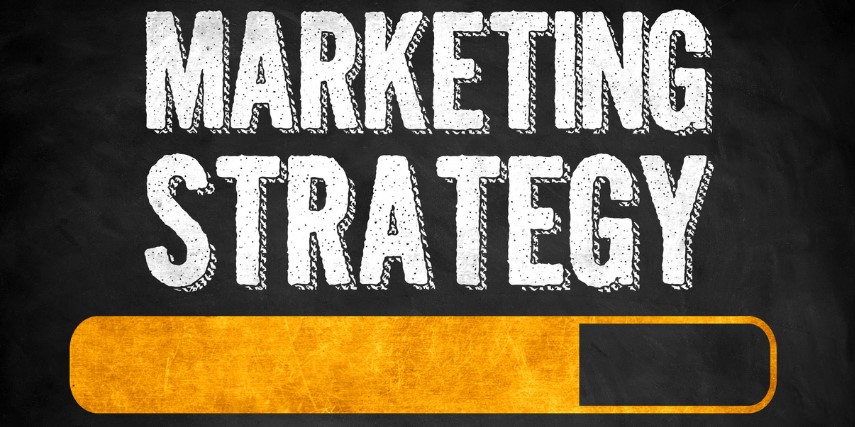You know marketing. Or…do you? You might think that marketing is essentially advertising. Or maybe you use it interchangeably with terms like sales or public relations. It’s all essentially the same, right?
That’s what we call a common marketing myth-conception. This lisp-inducing term (that we totally just came up with) can be applied to a lot of aspects of marketing. Even if you know that, in general, marketing is supposed to spur lead generation and overall sales growth, you may not be sure exactly how that happens.
And that can be tricky when you’re trying to sell your executive board on a new marketing strategy or justify yet another Instagram poll. Everyone knows that marketing can be a ton of fun, but it’s valuable and even essential. You know that, too, but you haven’t figured out how to measure it.
This is hinting at yet another marketing myth-conception, that the return on investment for marketing can’t be calculated.

Not only can you figure out whether your marketing strategy delivered, but you can even drill down to specific strategies, such as how many leads resulted directly from a mailed postcard.
Take a look at these common marketing myth-conceptions and see whether you know as much about marketing as you think you do:
Marketing Myth-Conception #1: A Social Media Strategy is Enough to Grow Your Business
Social media marketing is a tool for your marketing strategy, not a full strategy itself. Lead generation is most effective when members of your target market have multiple touchpoints with your brand.
That means they not only see you on Facebook or LinkedIn, but they also receive a tempting promotional email from you. When they visited the ice cream shop down the street from your business, a geofencing ad popped up on their smartphone. Before long, these create a mesh of awareness of your company and your brand.
Social media is an important part of a good strategy, and it does require a strategic approach. But it’s not enough on its own to optimize your lead generation or boost brand awareness. You need a comprehensive strategy.
Marketing Myth #2: Marketing is a Soft Science, an Art, Really
Marketers are, no doubt, a creative bunch. It tends to attract artistic and verbal talent, along with a lot of out-of-the-box thinkers. You might be surprised to learn that marketers also appreciate a good analytic report or spreadsheet.

Marketing is a balance of art and science. The initial ideas may be borne out of rowdy, imaginative brainstorming, but a good marketer also measures the effectiveness of those ideas. Here are a few examples:
- When creating your strategy, your marketing specialist will identify metrics that align with your marketing goals. You’ll decide ahead of time what defines success and then measure it and refine your strategy as needed.
- Marketers dig deep to learn about your target audience. They will seek out their gender, income range, hobbies, marital status, etc. If you’re going to create customized messaging, you need to know as much as possible about who is receiving it.
- Think email is a bit of a dinosaur? Email is still incredibly effective, in part because marketers can track which subject lines, text length and mix of text and images lead to the most click-throughs, leading recipients to your website.
Marketing Myth-Conception #3: It’s Impossible to Measure ROI on Marketing
This particular myth is easy to understand, but it’s still resting on a faulty foundation. If you think of marketing as only an art and forget that it involves data, strategy and metrics, you might mistakenly think that you can’t track the return on investment (ROI).
Let’s talk about a couple of examples that make it clear how easy it is to track the growth that comes from marketing:
- Google Analytics provides you insights showing that the click-through rate from a particular blog post led to an increase in sales. You can see the path customers took from the post to the landing page to the product page, then ending in a purchase.
- You decide to invest in some email marketing, highlighting particular products and offering promotions. You can determine which sales came directly from those emails by sending them directly to a unique landing page, allowing you to calculate your ROI on email marketing.
- You’ve noticed that your bounce rate is high on a product introduction page on your website. Your team decides to redesign the page, making it easy to understand how to get to pages for specific products, changing the images to more closely reflect your brand messaging and matching the font to the look of your logo. It’s not a quick process, but now you can see in your reports that visitors no longer bounce, but instead go on to product pages.
These are just a few ways your marketing can be tracked to demonstrate a positive ROI.
So, now that you know three of the most common ways we misunderstand marketing, you might be wondering what’s true of a good marketing strategy.

Here are three to consider:
Strategy Comes First: You need a solid strategy to carry all of your social media posts, email efforts, mailers and more with a comprehensive, unified set of values and goals driving every part of your marketing activity.
Psychology Plays a Part: Understanding who you are as a brand and the emotional connection that builds trust between you and your audience is an important part of marketing. You have to understand the frustrations and problems that people are trying to solve and how you can add value.
Do Some Data Work: Marketing relies on a lot of numbers, assessing where your strategy is performing well and where it needs revisions. Analytics help you improve your targeting, tighten up a campaign and make sure you’re measuring all the right factors.
Maybe you’ve never fallen prey to any of the myth-conceptions described here. That means we can meet up for coffee and get started right away with some ideas for your brand.
Or maybe you’ve bought into these, and you think you might want to ask a few questions. We’re all about it! Contact us at SJC Marketing and let’s get together and talk about where your business is headed.


